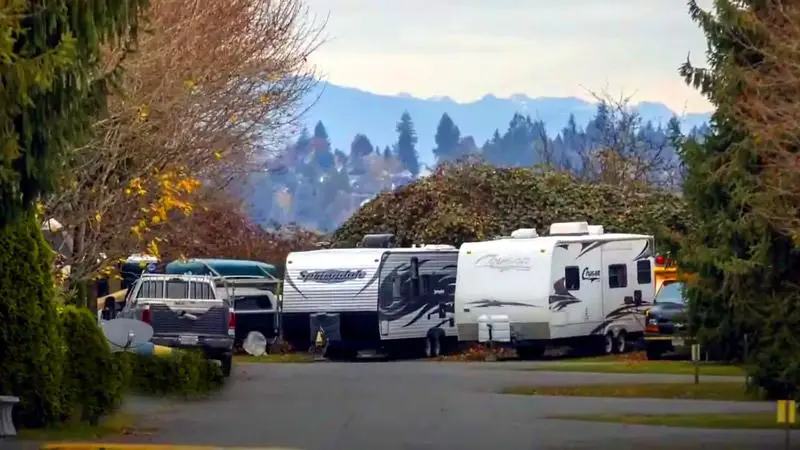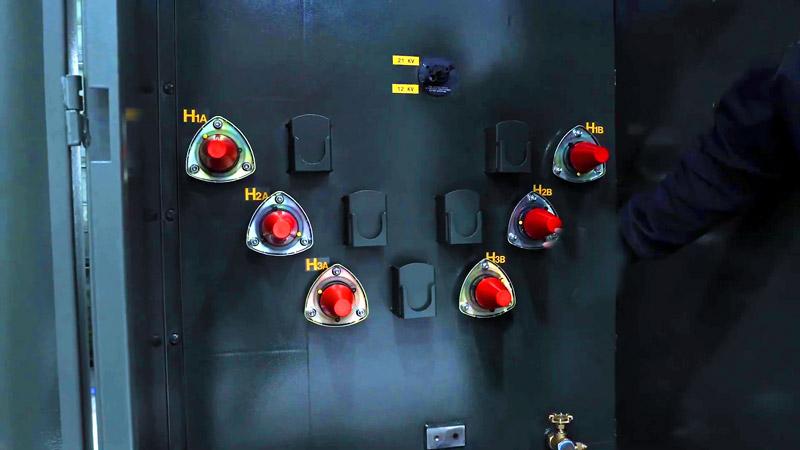How to Loop Feed RV Park?

An RV park is a recreational vehicle park that provides temporary accommodations for recreational vehicles (RVs). RV parks typically offer a variety of amenities, such as electrical hookups, water and sewage connections, and access to bathrooms and showers. In order to provide these services, RV parks require a well-designed and properly installed electrical system.
The electrical system for an RV park must be able to safely and reliably distribute power to each of the individual RV sites. This typically involves installing a main service panel, a grounding electrode system, pedestals at each RV site, and a feeder cable to connect the main service panel to the pedestals.
In this article, we will discuss the key components of an RV park electrical system, and provide an overview of the design and installation process. We will also highlight some important considerations for ensuring the safety and reliability of the electrical system.
You'll Learn About
What is Loop Feeding and Why It’s Important for Rv Parks?
Loop feeding is a method of wiring electrical systems in which the main feeder cable is run in a continuous loop from the main service panel to each of the individual loads (in this case, the RV sites). This allows for easy expansion of the system by simply adding new loads (RV sites) to the loop.
Loop feeding is important for RV parks because it allows for flexible and efficient management of the electrical load. By distributing the electrical load evenly across the loop, it is possible to avoid overloading any one circuit or connection. This can help prevent circuit overloads and power outages and can improve the overall safety and reliability of the electrical system.

Additionally, loop feeding allows for easy expansion of the system as the RV park grows. This is particularly important in the case of RV parks, where the number of sites may change frequently. With a loop feeding system, it is easy to add new RV sites to the electrical system without the need for major rewiring or modifications.
Overall, loop feeding is an important consideration for RV park electrical systems, as it provides flexibility, reliability, and safety.
How to Loop Feed RV Park?
It is recommended to hire a licensed electrician to perform this work to ensure that it is done safely and in compliance with relevant codes and standards.
Tools needed:
- Wire stripper
- Wire connectors
- Voltage tester
- Ground tester
- Grounding clamp
- Cable splicer (if necessary)
- Cable puller (if necessary)
- Ladder (if necessary)
Here’s the step-by-step guide to loop feed RV park:
- Determine the number of RV sites and the electrical requirements for each site. This will help you determine the size of the feeder cable and other equipment needed.
- Install a meter base and main service panel at the campground. This will serve as the main point of connection for the RV sites.
- Install a grounding electrode system at the campground. This will provide a safe and reliable grounding system for the RV sites.
- Install a pedestal at each RV site. The pedestal should include a 50/30 amp receptacle, a 20 amp GFCI receptacle, and a ground connection.
- Run the feeder cable from the main service panel to the first pedestal. Use the appropriate size and type of cable, as determined in step 1.
- Connect the feeder cable to the 50/30 amp receptacle on the pedestal using the appropriate wire connectors.
- Continue running the feeder cable to the next pedestal and repeat step 6.
- Repeat this process for all of the pedestals in the campground.
- Once all of the pedestals are connected, connect the grounding wire from the grounding electrode system to the ground connection on each pedestal.
- Test the electrical system to ensure that it is functioning properly and that all connections are secure.
What Electrical Requirement is Needed?
The electrical requirements for an RV park will vary depending on the specific needs of the park. In general, RV parks will require the main service panel, a grounding electrode system, pedestals at each RV site, and a feeder cable to connect the main service panel to the pedestals.
The specific electrical requirements will depend on the number of RV sites, the type of connections and outlets needed at each site, and the load that the electrical system will be carrying. For example, a typical RV site may require a 50/30 amp receptacle, a 20 amp GFCI receptacle, and a ground connection. The feeder cable should be sized and rated appropriately for the load it will be carrying.
It is recommended to consult with a licensed electrician to determine the specific electrical requirements for your RV park. They will be able to provide guidance on the appropriate size and type of equipment needed to safely and reliably power your RV park.
How the Grounding Electrode Systems Should Be?
The grounding electrode system is a critical safety feature of an electrical system. It provides a reliable grounding connection for all of the electrical circuits and devices in the system.
In the case of an RV park, the grounding electrode system should be installed at the main service panel. This will ensure that all of the RV sites are connected to a reliable grounding system. The grounding electrode system should be designed and installed according to the requirements of the National Electrical Code (NEC) and local codes and standards.
Typically, the grounding electrode system will consist of one or more grounding electrodes (such as ground rods or metal underground water pipes), grounding conductors, and grounding connections. The grounding conductors should be run from the grounding electrodes to the main service panel and should be connected to the grounding bus bar in the panel.
It is important to ensure that the grounding electrode system is properly installed and maintained, as this is essential for the safety and reliability of the electrical system. A licensed electrician should be consulted to design and install the grounding electrode system for an RV park.
How Are Campground Pedestals Wired?
You’ve to follow the proper steps as follows:
Determine the electrical requirements for each RV site
This involves determining the number of RV sites and the type of electrical connections and outlets that will be needed at each site. For example, a typical RV site may require a 50/30 amp receptacle, a 20 amp GFCI receptacle, and a ground connection.
Install a grounding electrode system
The grounding electrode system is a critical safety feature of a campground electrical system. It provides a reliable grounding connection for all of the RV sites and is typically installed at the main service panel.
Install pedestals at each RV site
Pedestals are the structures that hold the electrical outlets and connections for each RV site. They should be installed in a convenient location at each site and should include the appropriate outlets and connections as determined in step 1.
Run the feeder cable to the pedestals
The feeder cable is the main electrical cable that connects the main service panel to the pedestals at each RV site. It should be sized and rated appropriately for the load it will be carrying, and should be installed according to local codes and standards.
Connect the pedestals to the grounding electrode system
Once the feeder cable has been installed and connected to the pedestals, the grounding wire from the grounding electrode system should be connected to the ground connection on each pedestal. This will provide a safe and reliable grounding connection for each RV.
Everything you Need to Know About The Feeder Cables
A feeder cable is a large electrical cable that is used to distribute power from the main service panel to individual loads (such as RV sites) in an electrical system. The feeder cable is typically sized and rated based on the total load that it will be carrying and should be installed according to the requirements of the National Electrical Code (NEC) and local codes and standards.
In the case of an RV park, the feeder cable will typically be run from the main service panel to the pedestals at each RV site. The feeder cable should be sized and rated appropriately for the number and type of RV sites in the park and should be installed in a manner that ensures safe and reliable power distribution.
When installing the feeder cable, it is important to follow the manufacturer’s instructions and to use the appropriate tools and equipment. This may include wire strippers, wire connectors, tapes, cable splicers, and cable pullers, depending on the specific installation. It is also important to properly label the feeder cable and to protect it from physical damage.
Overall, the feeder cable is a crucial component of an RV park electrical system, as it is responsible for distributing power to individual RV sites. It is important to choose the right size and type of feeder cable and to install it properly to ensure safe and reliable power distribution.
Final Words
RV park electrical system is a critical component of any RV park. It is responsible for providing safe and reliable power to the individual RV sites and must be designed and installed according to the requirements of the National Electrical Code (NEC) and local codes and standards.
The key components of an RV park electrical system include a main service panel, a grounding electrode system, pedestals at each RV site, and a feeder cable to connect the main service panel to the pedestals. Proper installation and maintenance of these components are essential for ensuring the safety and reliability of the electrical system.
Overall, it is important to consult with a licensed electrician when designing and installing the electrical system for an RV park. They will be able to provide expert guidance and ensure that the system is compliant with relevant codes and standards.
